Nasi Kuning Recipe is an Indonesian yellow rice made with aromatics such as lemongrass and screw pine leaves, and spices such as turmeric and bay leaf, and coconut milk. This fragrant rice complements any dish that you make at home and is usually the star of any meal. Nasi Kuning is traditionally served at banquets or other festive occasions!
What is Nasi Kuning?
Some call it a gimmick, others swear by its nutritional benefits, and yet more people just use yellow food coloring to give plain rice a golden sheen. While it’s traditionally been associated with Indonesia, Java to be specific, yellow rice is consumed from the Philippines to South Africa. Nasi Kuning recipe is used to celebrate marriages, observe religious ceremonies, and rejuvenate health. What is it about this rice that makes it an all-time favorite?
Well, to begin with, the recipe for Nasi Kuning, is not just yellow color added to plain rice. It’s plain rice that has been cooked with turmeric, coconut milk, and a whole host of spices. In Malay (and I include Bahasa Indonesia here) nasi means rice and kuning means yellow. Interestingly, it is also the Malay name for the Yellowstripe Scad, which is traditionally deep-fried and eaten with Nasi Kuning.
What is special about Nasi Kuning Recipe?
Let’s begin with the color. Yellow is a significant color in many Asian countries that not only symbolizes wealth, or prosperity but also royalty, given that gold is a significant measure of wealth. So, when Asians serve yellow rice, it symbolizes prosperity. The yellow in Nasi Kuning comes from ground turmeric. Curcumin is the active ingredient in turmeric. Curcumin becomes yellow after the turmeric roots are dried out. This dehydration process surfaces the curcumin and provides that golden hue.
The use of turmeric as a healing herb has a 4000-year history. Turmeric belongs to the ginger (Zingiberaceae) family and is native to tropical South Asia. Traditional Indian Ayurveda, Chinese herbal, and Greco-Arab (Unani) medicines use turmeric to treat everything from relieving arthritic symptoms to wound cleansing to reviving chi. Modern scientific studies have, in fact, demonstrated that turmeric possesses antioxidant, anti-inflammatory, antimutagenic, antimicrobial, and anticancer properties, which is why turmeric sales globally have skyrocketed over the last few years.
There is no Nasi Kuning recipe without coconut milk. Coconut milk is a staple of Southeast Asian cuisine. When I was growing up, my mother would make fresh coconut milk, by grating the flesh of the coconut cut from one of her trees in her backyard. We would then add a little bit of warm water to liquefy this grated mass and then strain it. Depending on the amount of water added, the coconut milk could be thick or thin. It is a very simple process, but it can be time-consuming. I prefer to do it this way, rather than buy the commercially canned coconut milk because of the additives and preservatives.
The third component of Nasi Kuning recipe is easily overlooked. It is the bay leaf (also known as laurel). There are over a half dozen varieties of the bay leaf, and they are grown from the Caribbean to India. Be mindful to use dried bay leaves. The drying process leaves a flavor that is a cross between oregano and thyme, but fresh bay leaves are very bitter and have a pungent aroma, which is why they are generally removed after the cooking process. Bay leaves are a good source of vitamin A, vitamin B6, vitamin C, calcium, manganese, and iron. They aid digestion, help relieve stuffy noses (consumed as a tea), and may help manage blood sugar levels.
Finally, I will talk a little bit about the main ingredient, rice. While there are only 2 major families of rice, there are over 40 thousand varieties globally. The long-grain and aromatic rice are called indica, and the short medium-grained rice, japonica. Prior to the 1970s, Indonesia was home to almost 7000 varieties of rice. Government programs to feed the growing population compelled local farmers to use modern seed varieties. It was not until the turn of the century that heirloom Indonesian rice started to make a comeback.
That said, you can use pretty much any type of white rice to make Nasi Kuning, although served traditionally, I would stay with the short medium-grained rice for this recipe. The traditional Indonesian serving of Nasi Kuning is in the form of a mountain. While this may seem a function of the rice bowl, keep in mind that mountains have traditionally been the abode of the gods, and in Indonesia, rice is seen as the gift of the gods and Nasi Kuning is nothing short of their flavorful blessings.
Frequently Asked Questions:
- What are the health benefits of adding coconut milk to the Nasi Kuning recipe?
Coconut milk has several benefits.
- Lactose-free: Since the lactose carbohydrate is made of two sugars (glucose and galactose), it requires the enzyme lactase to break it back down to its molecular components so that the body can digest it. It is the lack of the enzyme that makes a person lactose intolerant. The lactose carbohydrate is present in all mammalian milk.
- Plant-Based: Coconut milk contains lauric acid, which is a medium-chain fatty acid (MCFA) that improves cholesterol levels and can enhance brain functions. Also, coconut milk has a lower calorie count than cow’s milk but has lower protein and calcium levels.
- Our bodies convert lauric acid into a highly beneficial compound called monolaurin, which has antimicrobial and anti-fungal properties.
2. What are some of the other methods of cooking this rice dish?
Here are other ways of cooking this rice dish:
Steaming: Soak the rice and cook with all the ingredients for 10 minutes or until the liquid is absorbed. Then, steam in a bamboo basket in a cheesecloth for another 10 minutes.
Rice cooker: Mix the rice and all the ingredients in the rice cooker and select the rice cook option. The ratio for the rice cooker method is 1:1 rice and coconut milk mixed with water.
This post may contain affiliate links. As an Amazon Associate, I earn from qualifying purchases at no extra cost to you.
If you’ve tried this recipe or have questions, I would love to hear from you. Please feel free to share your thoughts, comments, or any questions that you might have. And if you like my recipes, you could subscribe to my mailing list for the latest recipes that will be delivered straight to your inbox. From my pen to your table, Bon Appetit!
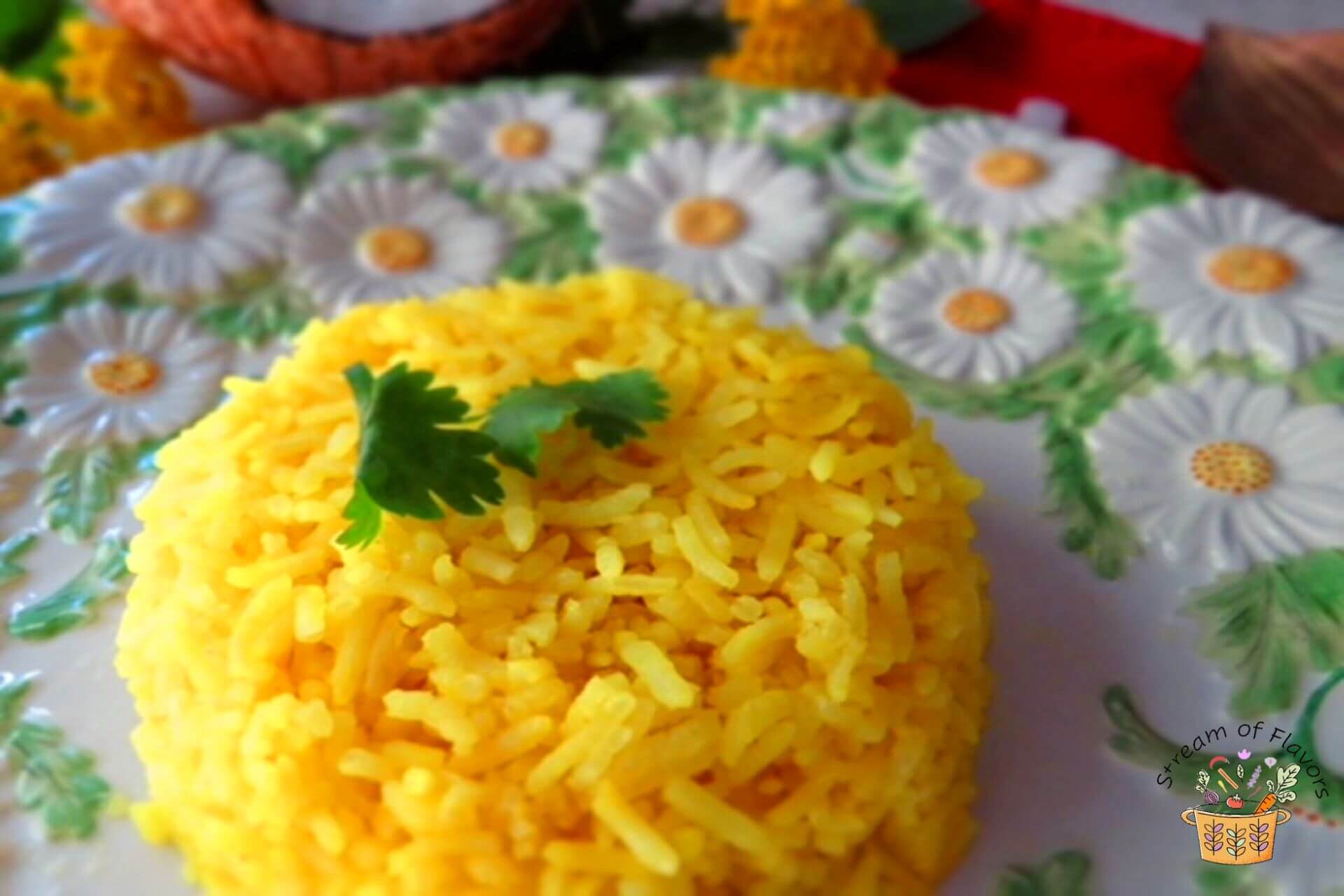
Ingredients:
- Rice: Jasmine rice or long or short grain rice – variation: 3:1 long grain and sticky rice
- Spices: bay leaf – variation: cinnamon and clove and/or add cumin seeds
- Aromatics: pandan leaf or screw pine or lemon zest – variation: lemongrass and makrut lime leaves
- Turmeric: dried turmeric powder or fresh turmeric peeled and ground
- Coconut oil: a dash to rub the rice – variation: sauté the rice in vegetable or canola oil before cooking
- Coconut milk: fresh coconut milk – variation: coconut cream or canned coconut milk
- Cilantro: fresh leaves for garnish – variation: dried coriander pd
Here are the step-by-step instructions on how to make this dish. Please refer to the recipe card below for the measurements.
How to make Nasi Kuning using my recipe:
- Prepare the ingredients.
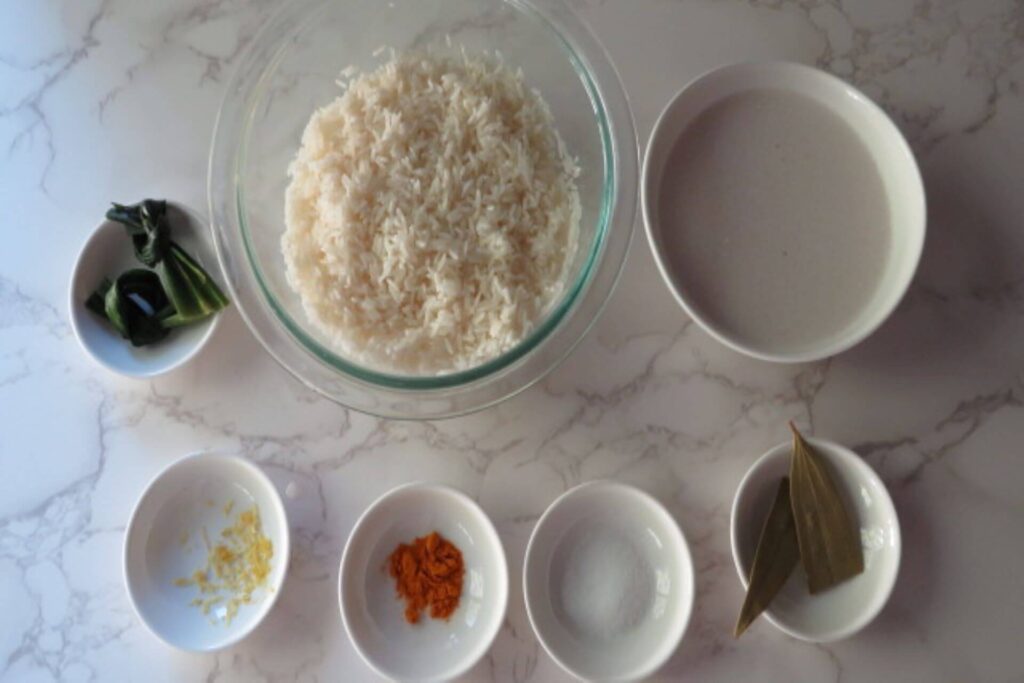
2. Heat a saucepot or Dutch oven with the water and coconut milk.
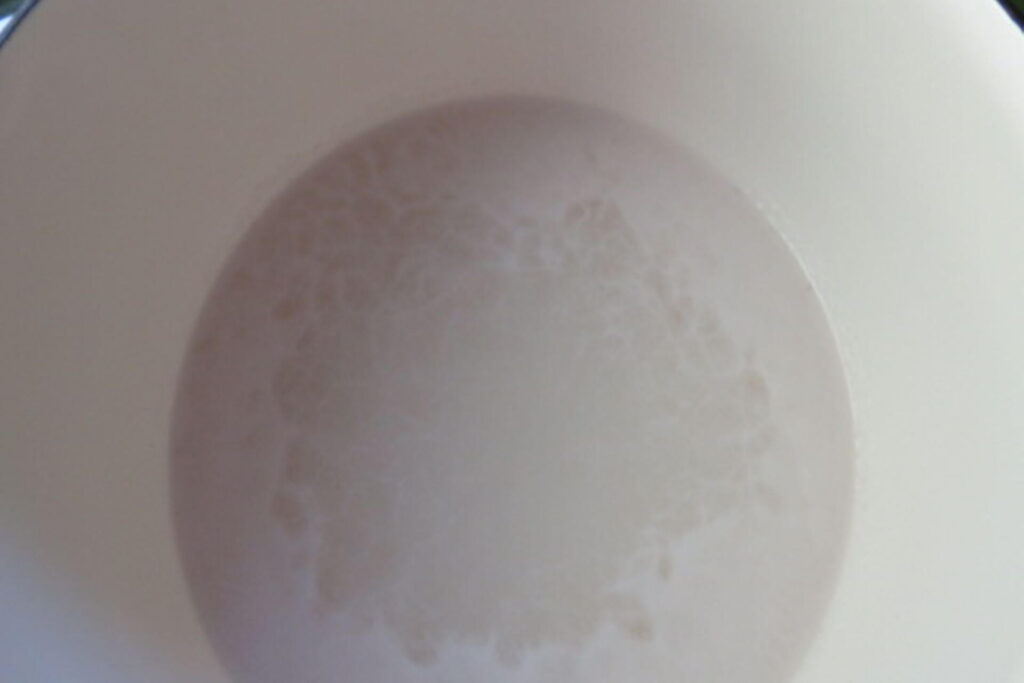
3. In the meantime, wash or rinse the rice thoroughly 5-6 times in cold water until the water is almost clear and not starchy. Drain and set aside. Rub the coconut oil into the rice with your fingertips. When the coconut milk and water mixture begins to boil, add the aromatics, spices, salt, and rice.
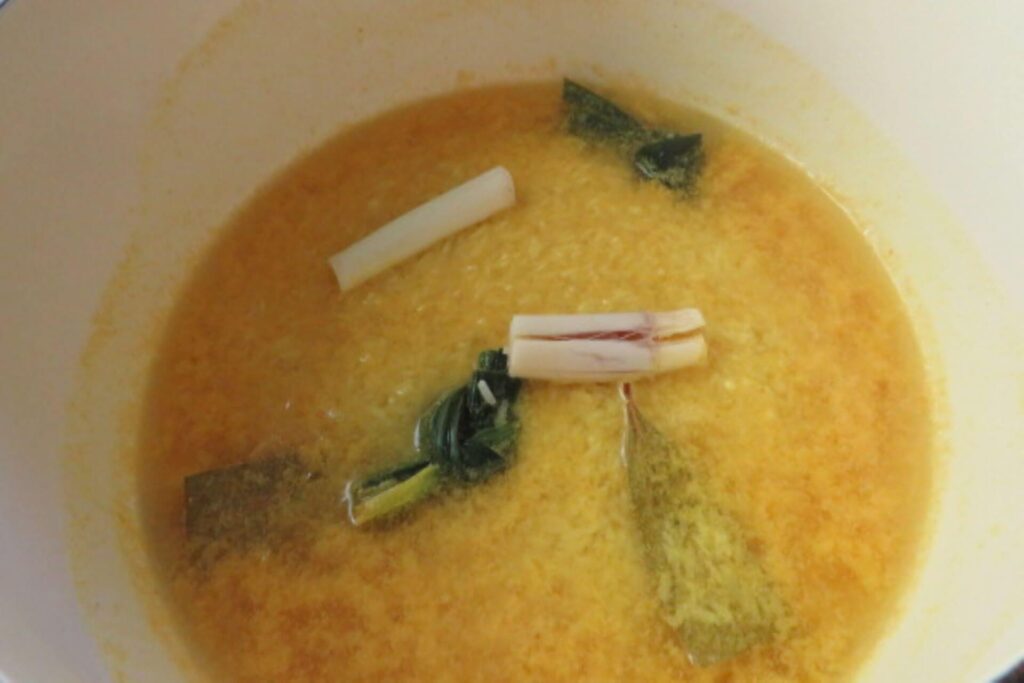
4. Lower the heat. Cover with a lid and simmer for 10-12 minutes or until the liquids are absorbed by the rice. Turn off the heat and let the rice rest for 8 minutes.
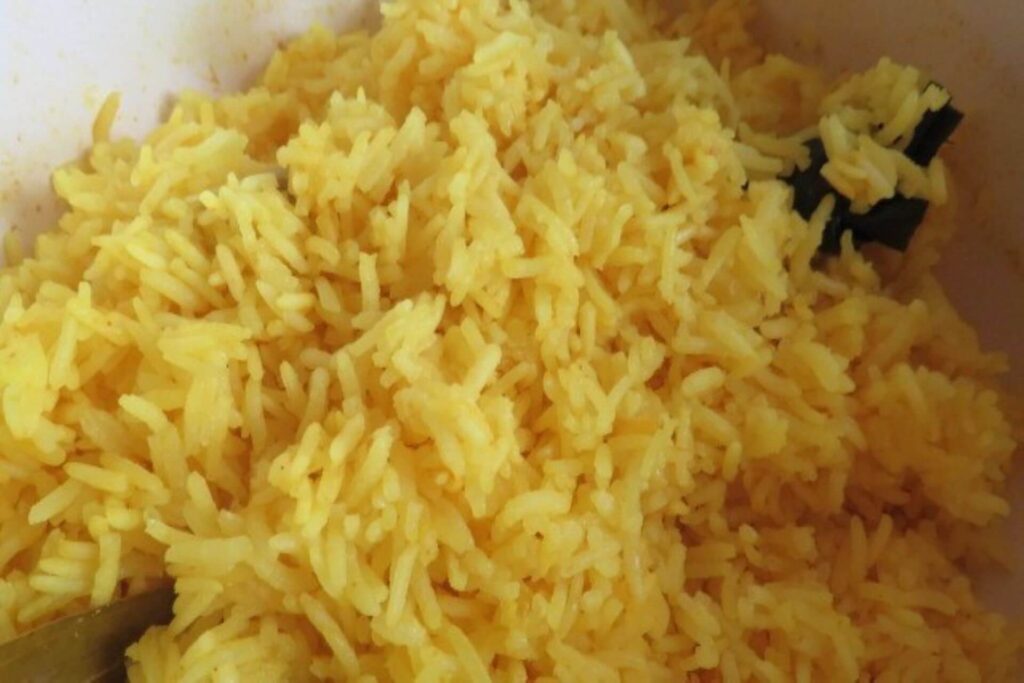
5. Use a fork to fluff up the rice. Use tongs to remove the pandan, lemongrass, and bay leaf.
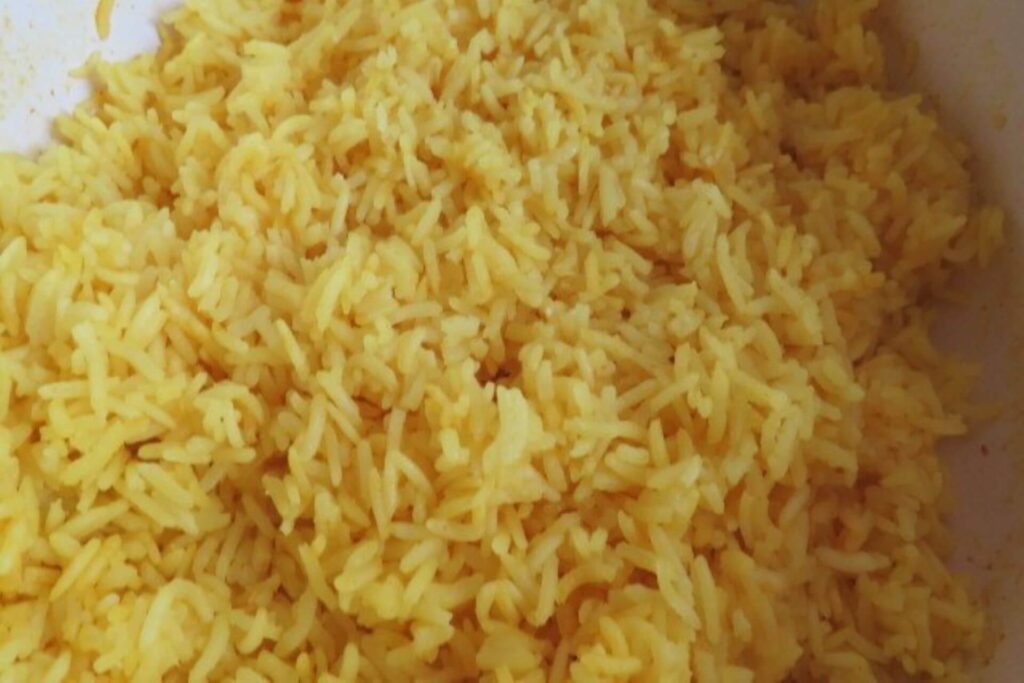
6. Serve in a mound or use a conical mold to shape the rice. Garnish with cilantro and serve hot.
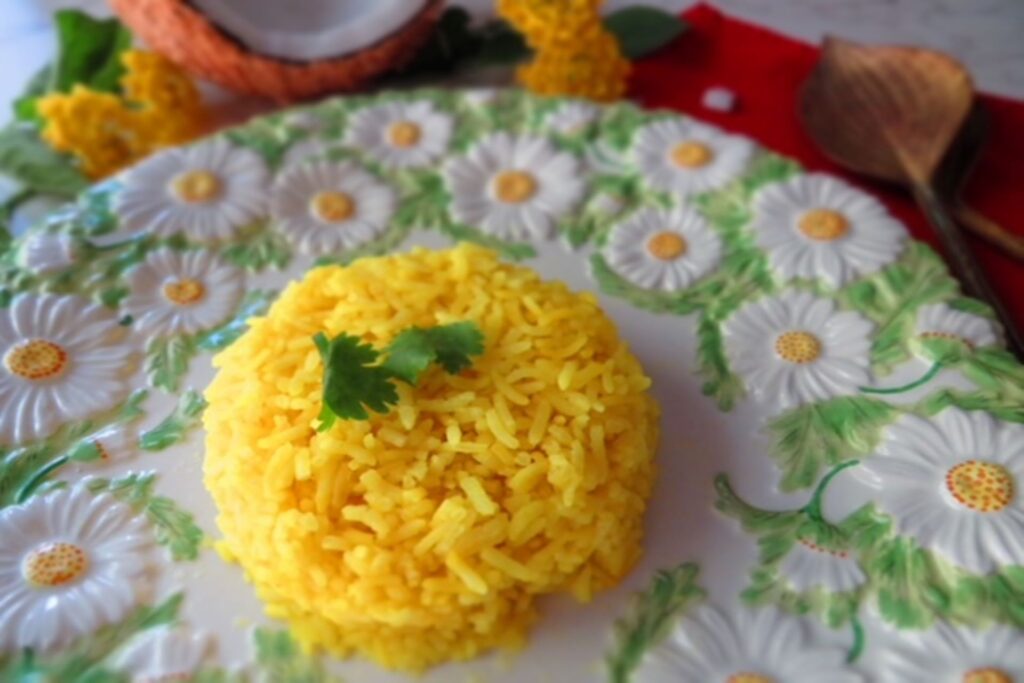
1. Do not add too much coconut milk or the thick coconut cream from canned coconut milk. This will make the rice stick and clump together.
2. Overcooking the rice will make it mushy. Various cooking utensils can differ in cooking times. For best results, simmer the rice and coconut milk until the liquids are absorbed and then turn off the heat. Let it rest for a few minutes and then use a fork to fluff it up.
3. Rinse or wash the rice in cold water and not warm or hot water. Rinse a few times until there is not much starch left or until the water is clear.
4. Drain the rice using a colander or a strainer to ensure that there is no residual water that will make the rice mushy.
5. Rubbing the rice with coconut oil helps keep the grain firm and not stick together.
Serving suggestions for the Nasi Kuning Recipe:
Storage:
Nasi Kuning can be refrigerated for two days or frozen for three months.
Other rice dishes that you might like:
Nasi Kuning Recipe
Equipment
- saucepot, stovetop
Ingredients
- 1½ cup jasmine rice
- 1½ cup water
- ¾ cup coconut milk fresh
- ½ tsp turmeric powder
- ¼ tsp lemon zest
- 2 pandan leaf
- 1 bay leaf
- ½ tsp salt
- 1 lemongrass white part only
- ¼ tsp coconut oil for rubbing the rice
Instructions
- Prepare the ingredients.
- Heat a saucepot or Dutch oven with the water and coconut milk.
- In the meantime, wash or rinse the rice thoroughly 5-6 times in cold water until the water is almost clear and not starchy. Drain and set aside. Rub the coconut oil to the rice with your fingertips.When the coconut milk and water mixture begin to boil, add the aromatics, spices, salt and rice.
- Lower the heat. Cover with a lid and simmer for 10-12 minutes or until the liquids are absorbed by the rice. Turn off the heat and let the rice rest for 8 minutes.
- Use a fork to fluff up the rice. Use tongs to remove the pandan, lemongrass and bay leaf.
- Serve in a mound or use a conical mold to shape the rice. Garnish with cilantro and serve hot.
Video
Notes
- Be gentle while fluffing the rice; use a fork to loosen the rice.
Nutrition


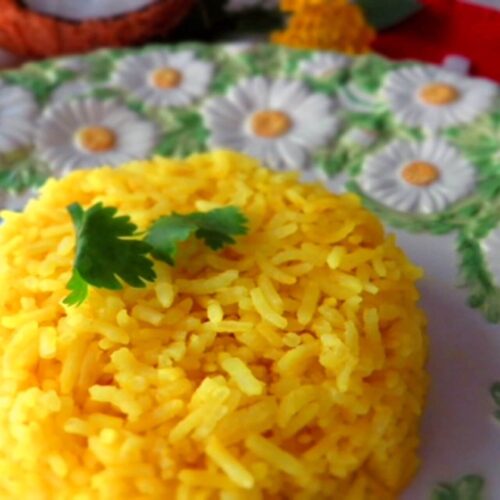
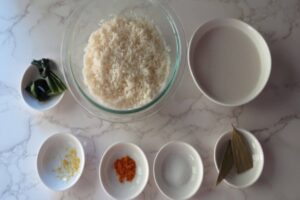
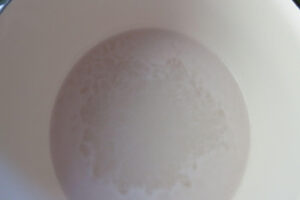
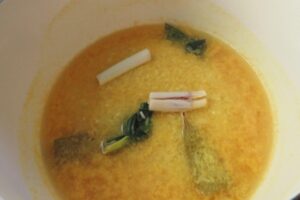
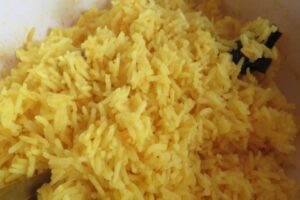
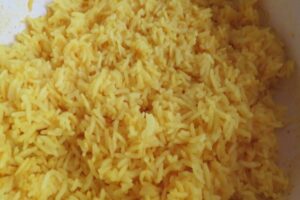
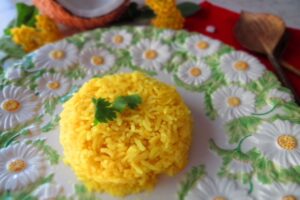




















0 Comments